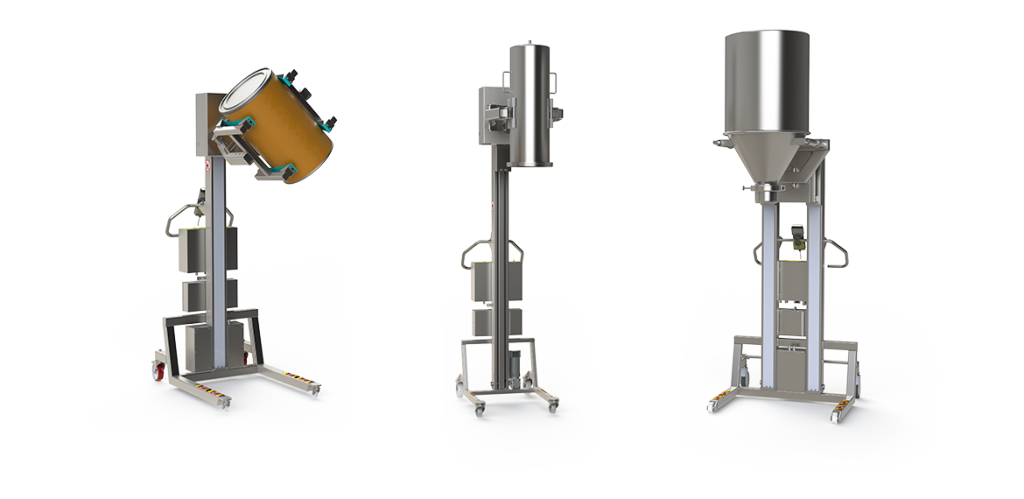Material handling lifts are indispensable tools in various industries, playing a critical role in efficiently handling and transporting heavy loads. Their importance spans across diverse sectors, from manufacturing and warehousing to construction and beyond. The different types of material handling lifts and their specific applications offer insights into how these essential tools contribute to operational efficiency and safety. Understanding the nuances of each type of lift can help businesses make informed decisions for their material-handling needs.
I. Material Handling Lifts in Focus
Material handling lifts are mechanical devices for lifting, moving, and transporting heavy or bulky loads. They play a fundamental role in streamlining operations, reducing manual labor, and enhancing productivity and safety. These lifts play a vital role in managing the flow of materials within a facility or at a job site, ensuring that they move items smoothly and efficiently. Material handling lifts are key to maintaining a seamless workflow, from lifting raw materials to relocating finished products.
II. Types of Material Handling Lifts
Various material handling lifts cater to different needs and environments:
- Hydraulic Lifts: These use hydraulic mechanisms to lift heavy loads. Ideal for applications requiring steady lifting power and precise control.
- Scissor Lifts: Known for their crisscross framework, scissor lifts are used for vertical lifting. And have platforms to hold materials or workers.
- Forklifts: Versatile and powerful, forklifts are essential in warehouses for moving pallets and heavy materials across short distances.
- Pallet Jacks: Smaller than forklifts, pallet jacks are used to move pallets within. A warehouse, especially in narrow aisles.
- Aerial Lifts: These are used for tasks at heights, such as maintenance work. And come in various forms, like boom lifts and cherry pickers.
III. Industrial and Warehouse Applications
Material handling lifts are crucial for optimizing operations in industrial and warehouse settings. They aid in the efficient and safe movement of goods from loading docks to storage areas. In warehouses, lifts like forklifts and pallet jacks are indispensable for inventory management, enabling quick and easy stock movement. They also play a critical role in reducing workplace injuries by minimizing. The need for manual lifting and carrying.
IV. Construction and Manufacturing Uses
Material handling lifts are essential for transporting heavy building materials, equipment, and supplies in the construction and manufacturing sectors. They enhance productivity by facilitating the easy and fast movement of materials, which is critical in these time-sensitive industries. Lifts such as aerial and scissor lifts play a particularly valuable role in providing access to high areas, while manufacturing often employs hydraulic lifts for their power and precision.
V. Retail and Distribution Centers
In retail and distribution centers, material handling lifts play a crucial role in streamlining inventory management and logistics. These environments demand the swift and efficient movement of goods, often in large quantities, from storage areas to shipping docks or retail floors. Lifts such as pallet jacks and forklifts are instrumental in handling palletized goods. While scissor lifts can be used for stocking and retrieving items from high shelves. By improving the speed and ease of moving stock, these lifts enhance operational efficiency and reduce the likelihood of inventory damage and employee fatigue.
VI. Safety Measures and Maintenance
Safety is paramount when operating material handling lifts. Operators should be properly trained in the use of each type of lift. Including understanding the specific safety features and load limits. Regular inspections and maintenance are essential to ensure. The equipment remains in optimal working condition, thus preventing accidents and breakdowns. This includes checking hydraulic systems, lift mechanisms, brakes, and controls. Adhering to a scheduled maintenance program can extend the lifespan of the equipment and maintain its reliability and safety standards.
VII. Choosing the Right Material Handling Lift
Selecting the right material handling lift involves considering several key factors:
- Load Capacity: Assess the typical weight of the materials that must be handled to. Ensure the lift can safely support them.
- Reach: Determine how high or far the lift needs to reach to perform the required tasks efficiently.
- Workspace Constraints: Consider the physical environment where the lift will be used. Including aisle width, floor conditions, and overhead space.
- Type of Materials: The nature of the materials (size, shape, and fragility) can also influence the choice of lift.
Conclusion
Material handling lifts are invaluable assets across a wide range of industries, from manufacturing and construction to retail and distribution. They enhance productivity and efficiency. And contribute significantly to workplace safety. Understanding the different types of lifts, their specific applications, and the importance of safety and maintenance are key to optimizing their use. For those in industries where material handling is a daily task, considering the incorporation of these lifts can lead to substantial operational improvements. As you look to enhance your material handling capabilities, remember to explore the wide range of options available and consider the specific needs of your operations. Visit METO Systems for a comprehensive selection of material handling solutions tailored to meet the diverse demands of modern industries. With the right material lifting equipment, you can elevate your business’s efficiency, safety, and productivity.
